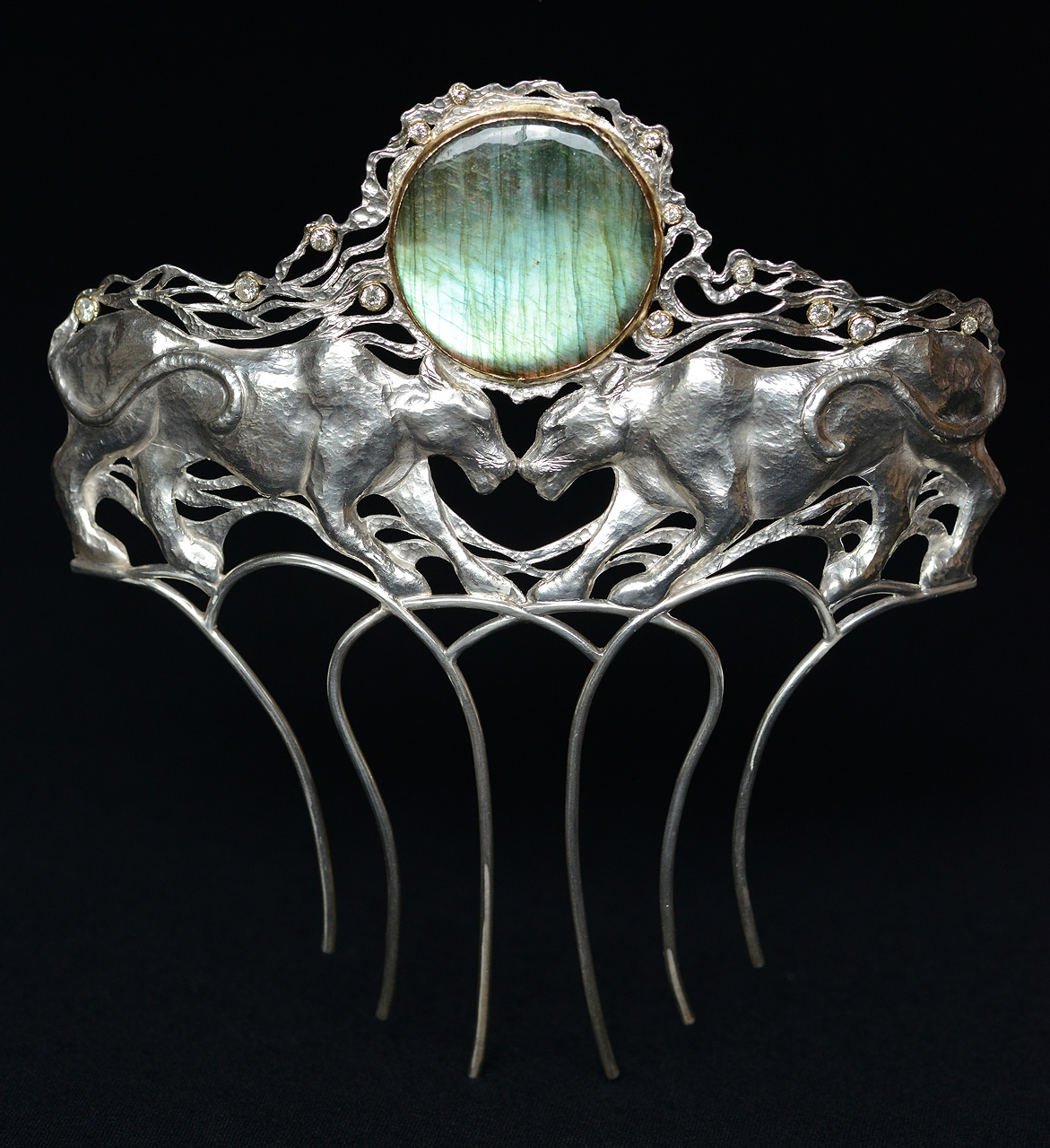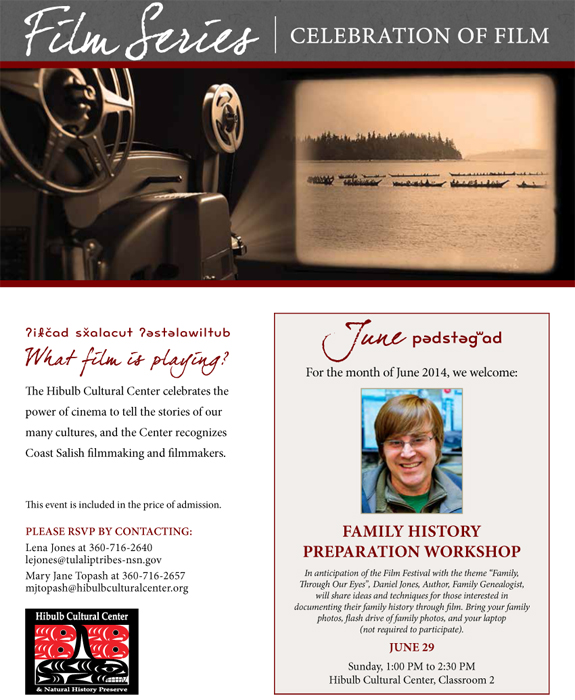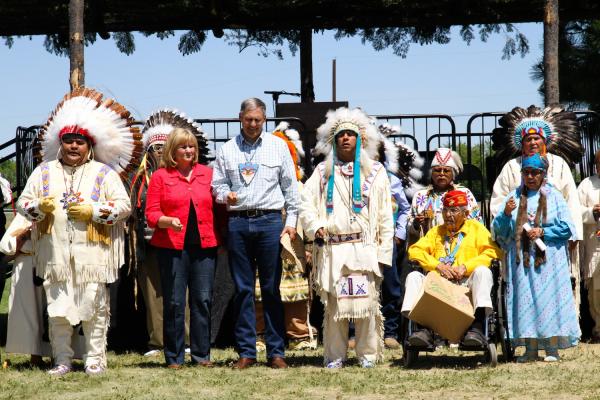Category: Arts & Entertainment
Inaugural Indigenous Fine Art Market to Launch August 21-23 2014
Juried art show in Santa Fe’s Railyard Arts District will feature more than 400 acclaimed Native American artists. Three-day event includes live performances, traditional music and dance, youth art, skateboarding exhibition, literary booths and more
- IFAM Kickoff Glow Dance Party: Wed., Aug. 20, 8pm. Location TBD
- IFAM Art Show & Celebration: Thurs., Aug. 21 – Sat., Aug. 23 Santa Fe Railyard
- IFAM Stage, Thurs., Aug. 21 – Sat., Aug. 23, Santa Fe Railyard
- Youth programming, Wed., Aug 20 – Sat.,Aug. 23, Warehouse 21
- Film programs
Hibulb Cultural Center Film Series, Sunday June 29
Behind the Scenes with Longmire Advisor Marcus Red Thunder
By Toyacoyah Brown, powwows.com
Are you a Longmire Fan? In case you’re not familiar with the show, Longmire is an A&E drama television series based on the “Walt Longmire” series of mystery novels written by author Craig Johnson.
One of the characters in the Longmire world is Henry Standing Bear, a Cheyenne man who is Walt Longmire’s best friend and confidant. As it turns out, Henry Standing Bear was based on author Craig Johnson’s real life friend, Marcus Red Thunder. The creators of the show turned to the Red Thunder when they needed a technical advisor to make sure they got all the Native details perfect.
In the video below you can see his contributions to the episode “Miss Cheyenne”.
In the “Miss Cheyenne” episode that aired Monday night the lead character Walt Longmire juggles a murder investigation and his duties as a fill-in judge for the Miss Cheyenne Pageant.
If you didn’t catch it, you can watch the full episode of Miss Cheyenne on A&E: http://www.aetv.com/longmire/video/miss-cheyenne
Longmire airs Monday nights at 10pm Eastern / 9pm Central on the A&E cable network.
Video: Tulalip Salmon Ceremony 2014
Watch video from the 2014 Tulalip Tribes Salmon Ceremony.
Produced by the Tulalip Tribes Communications Dept.
Young Eskimos Break Out on Their Own on TLC’s New Series ‘Escaping Alaska’
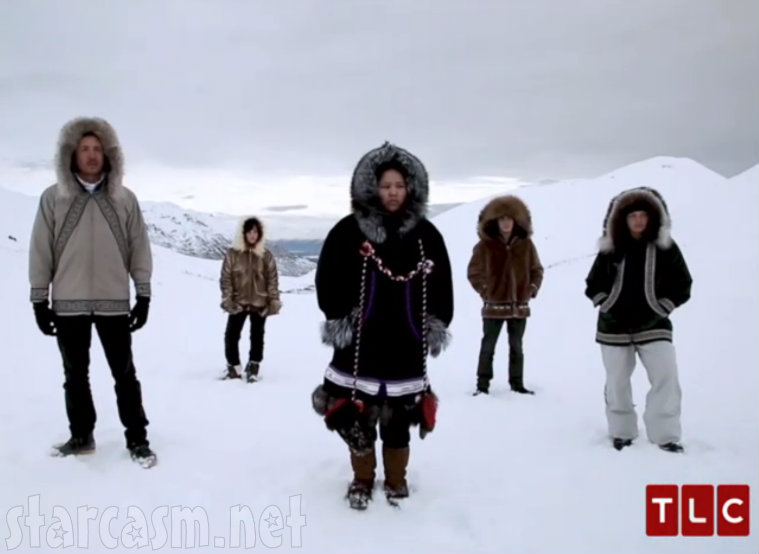
This will be the first program from Discovery Networks International to debut in the U.S. first
The Wrap June 25, 2014
In a similar vein to its popular “Breaking Amish” franchise, TLC once again places its gaze on a subculture whose youth want to experience the outside world on new series “Escaping Alaska.”
The six-part series will be the first program from Discovery Networks International (DNI) that will air in the United States first before moving on to more than 200 countries and territories across the world.
Debuting on Sunday, July 27 at 9/8c, “Escaping Alaska” will feature the challenging journey of Alaska natives, broadly referred to as Eskimos, Mary, Frank, Tamara, Qituvituag aka Q and Nuala, as they set out to explore the world outside their villages and small towns. Though filled with love and pride in their heritage, these young people yearn to know life outside the insular communities. But, that’s not how their families will take it.
“‘Escaping Alaska’ provides a rare window into a remote world that is quite foreign to many of TLC viewers – a look at the lives of an endangered culture and private community that is seldom seen by the lower 48,” said DNI’s production and development vice president, Jon Sechrist in a statement.
He continued, “The series is a fascinating study of people struggling to preserve their traditional way of life, and the aspirations of its younger generation who are seeking their own way. The five characters featured are a microcosm of their community.”
Leaving one’s home is considered a betrayal in that culture, so these young people will have to use cover stories to mask their true intentions for leaving for California. Their new experiences will include new jobs, dating and challenging their traditional upbringings. In the end, they’ll each make the decision to return home or continue their lives within the contiguous 48 states of the U.S.
Sechrist commissioned and executive produced the series. Hot Snakes Media is producing the series for DNI.
Set up camp for the day in Mukilteo
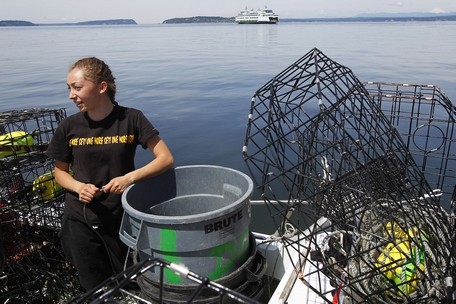
Shaylene Jefferson, 16, of Suquamish, waits in the boat for her uncle, in Mukilteo, after a day of crabbing in Puget Sound on June 11.
By Gale Fiege, The Herald
It was a summertime spot.
The Coast Salish people gave it a name that sounds much like Mukilteo.
It means “good camping ground,” said Michelle Myles of the Tulalip Tribes Lushootseed language department.
Mukilteo was the gathering place where in 1855 territorial Gov. Isaac Stevens signed the Point Elliott treaty with representatives of 22 tribes and bands of native people from the greater Puget Sound region, now called the Salish Sea.
History is big in Mukilteo, which was the first non-Indian settlement in Snohomish County. It was established about 1860 with a trading post. A fish cannery and sawmill followed later.
Mukilteo is still all about summer.
A walk-on ferry ride to Whidbey Island, beachcombing and picnic, a tour of the lighthouse, a beer at Diamond Knot, fish and chips at Ivar’s and produce from the Wednesday afternoon farmers market in Lighthouse Park off Front Street.
It’s all there in old Mukilteo. You can easily spend a full day enjoying it, so plan accordingly.
Any tour of Mukilteo has to start with its lighthouse, which opened in 1906 to guide ships in and out of Puget Sound and continues to be the city’s most enduring icon.
The Mukilteo Light Station, surrounded by native Nootka roses, is on the National Register of Historic Places. From noon to 5 p.m. on weekends you can climb the 38-foot tall lighthouse tower to see the now-automated carved-glass Fresnel lens and take a look around.
The 17-acre park along the beach has improved greatly since the city took it over from the state in 2003. Be sure to check out the park’s Coast Salish artwork created by Joe Gobin and James Madison of the Tulalip Tribes.
Kids have plenty to do, on the beach or on the playground. Educational signs help people understand what’s in the water and how to help keep it clean.
Even on a rainy day at the park, you can picnic under a shelter and enjoy the calming water-island-mountain view that seems incongruous with the fact that just a few miles away is a huge regional metropolitan area.
Mukilteo was incorporated in 1947 with a population of 775. Land annexations and development off the Mukilteo Speedway have increased that number to about 21,000 residents.
After the lighthouse, the beach park and a round-trip ride on the ferry, take in lunch at the Diamond Knot Brewery on the west side of the ferry or at Ivar’s Mukilteo Landing restaurant on the other side. You also can walk a block or so up the hill to Arnie’s seafood restaurant.
Another option is the Red Cup, located in a delightful little shopping block at Fourth Street and Lincoln Avenue across the street from the Rosehill Community Center.
The coffee shop offers breakfast and lunch, served up with a beautiful view. And from 6 to 8 p.m. on Wednesdays throughout the summer, Red Cup Cafe hosts an open microphone that attracts an eclectic mix of performers.
It’s no wonder that Mukilteo’s Rosehill Community Center is the site of dozens of weddings throughout the summer. The views are outstanding and the grounds include wild roses and other native and drought-resistant plants.
Inside, check out the display of work by local artists, the historical photos of the former Rosehill schools and Crown Lumber’s mill.
History buffs also may want to stop by the Pioneer Cemetery at Fifth and Webster streets overlooking the beach and the Japanese Memorial at Centennial Park, located at 1126 Fifth St.
The beautiful little cemetery includes a great view and the weathered gravestones of town founders Morris Frost and J.D. Fowler, along with headstones of Japanese mill workers.
The memorial is a bronze sculpture of a Japanese origami bird that sits on a white pedestal, symbolizing peace and commemorating Mukilteo’s long history with its Japanese community.
Finish your visit with a walk on the trail at nearby Japanese Gulch, a 144-acre forested park where the families of Japanese immigrants lived.
Mescalero women honored in documentary
A former Mescalero president and a first lady among women featured in film
By Dianne Stallings, Ruidoso News
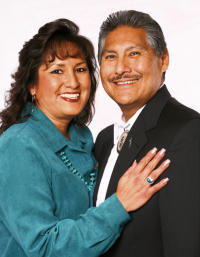
A former Mescalero Apache president and a first lady of the tribe will be featured in a documentary.”A Thousand Voices,” filmed by Silver Bullet Productions.
Sandra Platero served as president after the resignation of Fred Chino and before the election of current Mescalero President Danny Breuninger. Previously, she served as vice president and on the tribal council. Attempts to reach Platero for an interview were unsuccessful.
Selena Chino is the wife of Mark Chino, who served as Mescalero president three times. She was a victims’ advocate and tribal liaison with the Nest, Lincoln County’s only domestic violence shelter, and she served as a state tourism commissioner.
Selena and Mark attended a rough cut screening of the documentary on June 5, and the film is slated for a final version screening July 21, free at Buffalo Thunder (Resort and Casino) in Santa Fe. Check the Silver Bullet website for the time. Silver Bullet films also usually screen at the Smithsonian Institute in Washington D.C. and air on the Public Broadcasting System, a company spokesman said.
“I’m extremely proud of Selena,” Mark said. “She and her efforts to help domestic violence victims came to Pamela Pierce’s attention in mid-2013, and Selena was asked to appear in the film. She was recognized purely through her own efforts, as I already had left office.”
Pierce is chief executive officer of Silver Bullet Productions, a nonprofit founded in 2004, and based in Santa Fe. The organization with staff and volunteers stages cultural workshops with the aim of empowering Native American youths by raising their educational aspirations and by cultivating young filmmakers. The organization has produced 31 projects with the help of sponsors and recently received the Yawa’ Award for special projects, given to nonprofits that put actions to their words. The company’s “Canes of Power” also won four regional Emmys.
Silver Bullet was formed because of concerns by members of Native American groups over the loss of language, cultural and community, according to Pierce.
“A Thousand Voices” is the story of the inherent power of tribal women in New Mexico, and was filmed partly through funding with the San Manuel Board of Mission Indians. Besides the screenings and possible PBS airing, the film will be presented to students, who will participate in writing the curriculum and discussion guide that will accompany the documentary, following a pattern for all of Silver Bullet’s films, Pierce wrote in a memorandum to participants before the rough cut was screened.
“The production of this film has been a wonderful journey,” Pierce wrote. “Each of our participants has been revealing in ways that educate and shatter stereotypes.”
“A Thousand Voices” looks at the traditional roles of tribal women and poses the questions of how stereotypes from the media and literature altered the reality of tribal women, what are the universal lessons to be learned from the traditional values and the current status of Native American woman; and what are the threats to native communities, if women do not continue to play their crucial roles?
Selection process
As a domestic violence survivor and victims’ advocate, former first lady of the Mescalero, a state tourism commissioner, a store manager, and since May, a front desk manager and concierge for the tribe’s Inn of the Mountain Gods, Selena Chino was a natural choice for inclusion in “A Thousand Voices.”
A panel of tribal advisors from a variety of tribes, and representatives from Silver Bullet looked at the candidates.
“You can be a wonderful person, but you may not always come off as being able to state what your beliefs are and have the courage to state them,” Pierce said. “It’s not enough to stand for something, you have to be able to say it in a way that other men and women can relate to you. That certainly was true for Selena, Mark and Sandra.”
“The theme of the film is about the inherent strength of tribal woman and how that strength diminished or changed because of the white invasion from Spain, Mexico and the United States, and then return again to the strength of women that goes back to the beginning of time, and still is there despite the challenges,” Pierce said during a telephone interview Wednesday. “That strength is there in our modern current New Mexico tribal women. The reason Selena and her husband were selected was because they represent that strength. Selena represents it in two ways. She is married to a previous president of an Apache tribe and that takes strength to be married to a leader, no matter what your gender, and to be involved in a political family. And also because of her commitment to empowering women who have been victims of domestic violence. It was important to include that voice, not just from women. Selena and Mark together represent a belief in the hope for tribal women to survive domestic violence. It was obvious from the first time I spoke with her that she was somebody I really felt would enhance the message of the film.”
For Sandra Platero, “It was the strength of being a woman leader among other tribes that do not have women leaders,” Pierce said. “She certainly was a spokesperson for her language and her leadership.
“I think both women and their families deserve praise. It takes a lot of courage and determination and they showed that.”
Selena Chino
“I received a phone call in September from Pamela Pierce with Silver Bullet,” Selena said. “She mentioned there was a big meeting and they were kicking around who they would want to interview. She didn’t say who suggested my name. I had to go up to Santa Fe anyway during the Indian Market, We arranged time to talk. She came to Buffalo Thunder and we sat down. Thee project focuses on Indian women of power and how they have juggled their involvement with government, plus tribal culture and being a mother, how they keep culture and traditions alive while still doing all these empowerment things.”
Initially Pierce was looking for ideas for the project, Selena said.
“I mentioned that from 2008 to 2010, I worked as outreach coordinator at The Nest,” Selena said. “I was an advocate on Wednesdays, and that’s where my domestic violence and sexual assault training came from, helping residents. Then I became liaison between the tribe and Nest. (Pierce) began focusing, because I mentioned that domestic violence is the number one killer of Native American women nationwide. We started talking about that. She said she would really like to interview me. About that time Mark walked by and I introduced them, and she dragged him in. He was involved with the Nest too, being the president and volunteering. He spoke about how his view had changed from (his years in) law enforcement and what he learned from me being involved with the Nest. She wanted to interview him too.”
After seeing the raw cut of the film earlier this month, “It blows our minds to be involved with something like this, to be on PBS, in schools with workbooks,” Selena said.
Although the couple no longer has a daily involvement with the Nest, Selena said it is part of their lives.
“I still help as much as I can,” she said. “I still have people calling my cell phone just because they need help. I have people who stop me and ask questions, because they know me. So I still help out people even though I am not directly involved with the Nest anymore. People know I’m here (at the Inn) and ask how did you do this facing this situation and who can I call and who can I talk to.”
Selena can empathize with those exposed to domestic violence, because she dealt with the behavior in her first marriage.
“My life is very complicated story,” she said. “My mother went to school at Pasadena City College. She was not raised on the reservation, because of a program of relocation of kids on the Hopi reservation. There was a grant in the 1950s that helped send a student to a family, who helped support them and put them through college while they took care of their kids and helped around the house. That’s how she ended up in Pasadena. She also was a runner up for queen in the Rose Bowl Parade. She would have been first Native American queen had she won. She always encouraged me to go further, not to stay on the reservation, to get involved in a lot of interests.”
Selena’s father died in 2002 and her mother in 2006. “She was very beautiful inside and out,” Selena said of her mother. “She met my father when her family lived in Winslow, Ariz. He was the boy next door and the parents were friends, They were college sweethearts, They got married, then they got divorced, they remarried and divorced again. And at very end were living together, because they got along better when they were not married. I was her maid of honor the second time. We lived in Grants at that time. I wasn’t raised on the reservation. I moved back here in 1978.”
Selena said she was married for five years to a “very abusive man,” and went through the experience of having her self esteem and confidence constantly assaulted, then pulling herself up and moving forward. “It’s been a long road,” she said. “I’ve been where they’ve been at the Nest.
“Then I met Mark, who is very patient, thank God, because I have all this baggage with me. But with confidence from him and his support, I know what a healthy relationship is with him. It’s loving, it’s supportive. Everything that he’s given me.”
The couple celebrated their 20th anniversary on April 30, which Selena said, “Is an accomplishment right there. We’re totally opposite. He’s so quiet and reserved. On the other side, I talk to everybody, have conversations with people I don’t even know.”
While Mark was in office, Selena often accompanied him on trips, including the nation’s capitol, developing personal relationships with dignitaries and elected officials such as (New Mexico former attorney general) Patricia Madrid, Gov. Susana Martinez and Secretary of State Dianna Duran.
“As a former tourism commissioner, former first lady, the facets of my life are so complicated,” Selena said. “I don’t think I’m really involved in a lot of stuff. I do it, because I enjoy it. I just do it to help people, not add things to my resume.”
Those interviewed for the film were Georgene Louis, Acoma attorney and state legislator; Richard Luarkie and family, Laguna governor; Lela Kaskalla, past governor of Nambe; Sandra Platero and husband Paul; Selena Chino and husband Mark; Christy Bird, 16-year-old singer from Santa Domingo, who performed on a commercial for the Super Bowl; Rose B. Simpson, Santa Clara artist; Patricia Michaels, award winning designer on Project Runway from Taos Pueblo; Veronica Tiller, Jicarilla Apache historian and author; Navajo woman weavers from Two Grey Hills and Toadlena Trading Post; Luci Tapahonso, Navajo poet lureate; Matthew Martinez, historian and grandson of Esther Martinez of Ohkay Owingeh; and Liana Sanchez and family, owner of Avanyu LLC Construction company, San Ildefonso.
Tulalip TV mentor young filmmakers during film project
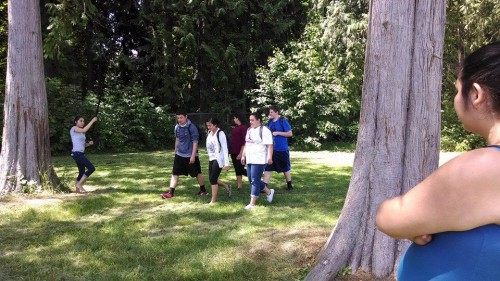
Photo/ Brandi N. Montreuil, Tulalip News
By Brandi N. Montreuil, Tulalip News
TULALIP – Quiet on set. Camera frame. Speed. Mark it. Action!
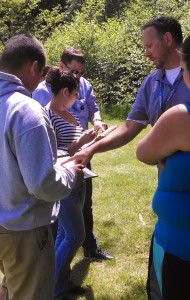
Photo/ Brandi N. Montreuil, Tulalip News
Tulalip Heritage High School students recently held their filmmaking debut on Friday, June 13, with a little help from Tulalip TV, subsidiary of Tulalip Tribes Communications. Through a unique collaboration between Heritage High School and Tulalip TV, multi-media students received a crash course on film production to produce a short film titled, “Lady of the Woods.”
The project, created by Heritage principal Shelly Lacy and Heritage teacher Cerissa Gobin, required students to not only learn pre and post- film production and editing, but also to create a script and act it out.
“A lot of times, as viewers, we don’t think about how a movie comes together,” said Niki Cleary, Tulalip Tribes Communications Director. “This gave our youth a chance to see that it doesn’t happen all at once from start to finish. They had the fun experience of shooting scenes out of sequence. The scenes, which happen one right after another in the movie, were shot on different days. Unfortunately, the students forgot to wear the same clothing, which made for some continuity issues, but really helped them learn some of the basic principles
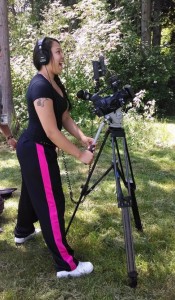
Photo/ Brandi N. Montreuil, Tulalip News
of movie production.”
The short film, which started off initially as a game show in brain storming sessions, provided students the entire film production process on a limited schedule. This included learning filmmaking terminology, which to untrained ears, sounds a lot like random dialogue being yelled out by the director from behind the camera. Roll camera. Tilt. Speed frame. Fade in.
“I am very happy with what we were able to accomplish in such a short period of time,” said Brian Berry, director of video for Tulalip TV, who worked with students throughout the filming. “We all knew that we were working against the clock, and that was one of the skills that the students learned, time management with regard to productions. We saw a lot of interest from many of the students and we hope this spark will ignite a growing base of students who want to continue with this type of study and possibly career path.”
That’s a wrap. As part of the filmmaking process, students debuted “Lady in the Woods” to underclassmen during the last days of school completing their filmmaking process.
“The student participation has been amazing. Although listening to the lecture portion of class was tough, they really engaged once they got hands on with the equipment,” said Cleary. “Ultimately, we hope to train the Heritage students to the point that they are able to cover Heritage Sports with a student staffed video crew. The skills they learn can also be used to

Photo/ Brandi N. Montreuil, Tulalip News
produce a Heritage news program, public service announcements or any number of exciting video projects. We hope that the students who learn video skills at Heritage will be the next generation of Communications Department employees.”
Brandi N. Montreuil: 360-913-5402; bmontreuil@tulalipnews.com
Yakama Tribe Celebrates Treaty of 1855 With Annual Pow Wow and Parade
Jack McNeel, Indian Country Today
Washington state Governor Jay Inslee and his wife, Trudi, took part in the Yakama Treaty Days Parade on June 9, recognizing the Treaty of 1855 between the U.S. and the Yakama Nation. Governor Inslee stopped frequently to shake hands and exchange a few words with onlookers, as he made his way to the podium to join Tribal Council Chairman JoDe Goudy, who rode behind him on horseback in full regalia, and Navajo Code Talker Kee Etsicitty.
The parade included a rodeo, pow wow, golf tournament, softball tournament, salmon bake and some unofficial business — talks between the the governor and tribal leaders were held on the grounds of the Yakama Cultural Center. A group of young dancers, the Swan Dancers, also honored guests with a Welcome Dance.
Chairman Goudy proclaimed June 9 as “Governor Jay Inslee Day”’ for his commitment to the Yakama Nation. Goudy presented Inslee with a copy of the original treaty and the tribe gave, “so he could read it over and over and over again,” Goudy said.
The softball tournament was held a few blocks away and 14 teams participated. Most of the men’s teams were made up of players from different tribes. But team “Tribes,” from the Yakama Nation, took first place, and in second were the Muckleshoot “Warriors.”
On the women’s side, the Silver Bullets, made up of players from various reservations throughout Washington, Oregon and Idaho, took first place and the Ice Ice Natives from Elwha finished in second. The winners received sweaters and a $400 payout.
Eighty golfers from 13 tribes gathered at the Mt. Adams Country Club. Golfers had the option of playing in a 4-man scramble tournament, divided between duffer and stroker divisions. They also had the option of singles match play.
The pow wow was held about 20 miles away at White Swan. Dancers gathered from far and near for the two-day event. The indoor pavilion was filled and vendors surrounded the building selling everything from frybread and Indian tacos to jewelry and beadwork. An adjacent building held stick game competitions.
Miss Yakama Nation, Jeanetta Garcia, and Junior Miss Yakama, Abigail Totus, were both presented at the parade and at the pow wow along with young royalty from other tribes.
The Treaty of 1855 involved all 14 bands of the Yakama Nation. Representatives of those bands make up the Tribal Council. The population is now upwards of 10,000 members on the 1.2 million acre reservation.
Read more at http://indiancountrytodaymedianetwork.com/2014/06/16/yakama-tribe-celebrates-treaty-1855-annual-pow-wow-and-parade-155318



